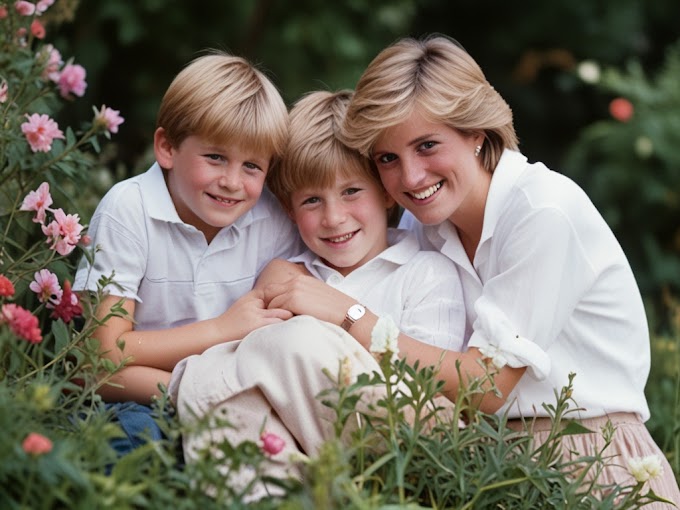In the grand tapestry of British royal history, few threads are as intricately woven and emotionally charged as the story of Camilla and Diana. Their lives, intertwined with that of King Charles III, have shaped the monarchy in ways that continue to reverberate today. Let's embark on a journey through time, exploring the complex legacy these two women have left behind.

The Royal Love Triangle
| Year | Event |
|---|---|
| 1970 | Charles meets Camilla Shand |
| 1973 | Camilla marries Andrew Parker Bowles |
| 1977 | Charles meets Diana Spencer |
| 1981 | Charles and Diana marry |
| 1986 | Charles resumes relationship with Camilla |
| 1992 | Charles and Diana separate |
| 1995 | Diana's BBC Panorama interview |
| 1996 | Charles and Diana divorce |
| 1997 | Diana tragically dies in a car accident |
| 2005 | Charles and Camilla marry |
| 2022 | Camilla becomes Queen Consort |
This timeline, while concise, barely scratches the surface of a story that has captivated the world for decades. Let's delve deeper into the legacy of these two remarkable women.
Diana: The People's Princess
Diana Spencer burst onto the royal scene like a breath of fresh air. Young, beautiful, and relatable, she quickly captured the hearts of the British public and became a global icon. Her legacy is multifaceted:
- Humanitarian Work: Diana's hands-on approach to charity work, especially with AIDS patients and landmine victims, set a new standard for royal philanthropy.
- Fashion Icon: Her style influenced a generation and continues to inspire designers today.
- Media Relationship: Diana's savvy handling of the press changed how the royal family interacted with the media.
- Modernizing the Monarchy: Her approachable nature helped bring the royal family closer to the people.
- Mental Health Awareness: Diana's openness about her struggles with bulimia and depression helped destigmatize mental health issues.
Camilla: From Villain to Queen
Camilla Parker Bowles' journey in the public eye has been a stark contrast to Diana's. Initially cast as the "other woman," her path to acceptance has been long and challenging:
- Resilience: Camilla faced intense public scrutiny and criticism but persevered in her relationship with Charles.
- Charitable Work: Like Diana, Camilla has championed various causes, including literacy, osteoporosis awareness, and support for victims of sexual assault.
- Modernizing Role: As Queen Consort, Camilla has helped shape a more relatable and contemporary monarchy.
- Family Dynamics: She has navigated complex relationships with William and Harry, Diana's sons, with grace and patience.
- Public Image Transformation: From one of the most disliked figures in Britain to a respected member of the royal family, Camilla's image rehabilitation is remarkable.
A Tale of Two Legacies
The intertwined stories of Diana and Camilla have left an indelible mark on the British monarchy and public perception. Their legacies continue to shape royal narratives:
Media Scrutiny and Privacy
Diana's tragic death, partly attributed to paparazzi pursuit, sparked a global conversation about media ethics and celebrity privacy. This dialogue continues today, as evidenced by Prince Harry and Meghan Markle's struggles with press intrusion.
Redefining Royal Roles
Both women challenged traditional notions of what it means to be a royal. Diana's humanitarian work set a precedent for royals as global ambassadors for change. Camilla, in turn, has redefined the role of a divorced woman in the monarchy.
Public Expectations vs. Private Realities
The stark contrast between public personas and private struggles, so poignantly illustrated in Diana's life, has led to increased awareness of the pressures faced by those in the public eye.
The Power of Second Chances
Camilla's journey from pariah to Queen Consort is a powerful narrative of redemption and the public's capacity for forgiveness.
Evolving Family Dynamics
The complex relationships between Charles, his sons, and Camilla have highlighted the very human aspect of the royal family, reminding us that even kings and queens face familiar family challenges.
Looking to the Future: The Monarchy in Flux
As we move further into the 21st century, the legacies of Diana and Camilla continue to influence the shape of the monarchy:
- Balancing Tradition and Modernity: The royal family must navigate between maintaining centuries-old traditions and adapting to modern expectations.
- Transparency and Authenticity: There's an increasing demand for royals to be more open and genuine, a trend largely influenced by Diana's approach.
- Charitable Focus: Both women's dedication to charitable causes has set a high bar for future generations of royals.
- Media Relations: The royal family continues to grapple with maintaining privacy while remaining accessible to the public.
- Acceptance and Inclusion: Camilla's acceptance into the royal fold may pave the way for more diverse and inclusive representations within the monarchy.
A Legacy of Transformation
The story of Camilla and Diana is more than a tale of rivalry or scandal. It's a narrative of personal growth, public perception, and institutional change. Their legacies, both individually and collectively, have reshaped the British monarchy in profound ways.
As we reflect on their impact, we're reminded that even the most traditional institutions can evolve. The monarchy that emerges from their influence is more human, more relatable, and perhaps better equipped to face the challenges of the modern world.
In navigating this complex history, the royal family - and indeed, all of us - can learn valuable lessons about resilience, forgiveness, and the power of personal transformation. The legacies of Diana and Camilla, intertwined yet distinct, continue to guide the royal narrative into a new era.










